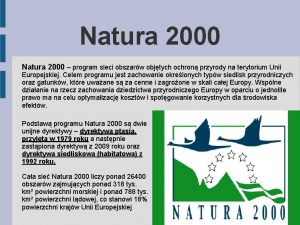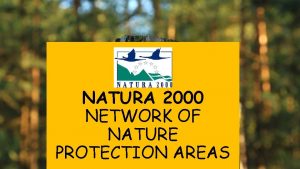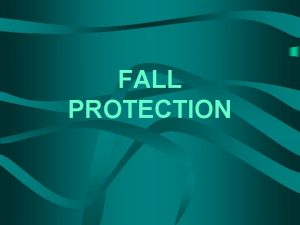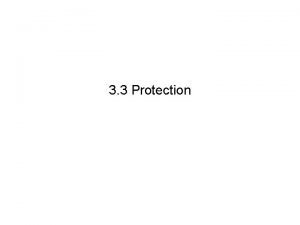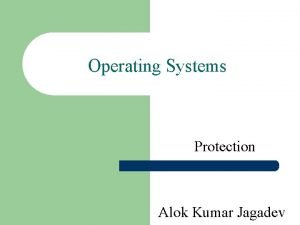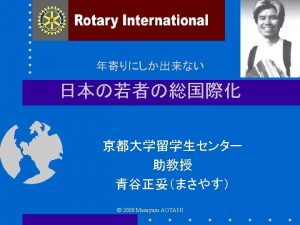Nature 2000 Nature 2000 network program nature protection














- Slides: 14

Nature 2000

Nature 2000 - network program nature protection areas within the European Union. The aim of the program is to preserve certain types of natural habitats and species that are considered rare and endangered across Europe.

The objectives of the establishment of the Nature 2000 network Human activity is one of the main reasons for the sharp increase in the pace of extinction many species of plants and animals in recent decades, including the most important cause of habitat destruction is considered by appropriating their living space (e. g. for the construction of roads and settlements) and the discharge of pollutants into the environment. Species unable to adapt to the new, inferior living conditions and gradually die off

The Nature 2000 network was established to standardize criteria throughout the EU and natural habitats for endangered species protection on a European scale. Its purpose is to stop the extinction of plant and animal species and the protection of the full spectrum of biological diversity within the European Union, under the conditions of continuous monitoring of their current state and ongoing changes in

TYPES OF NATURE 2000 AREAS AND BASE THEIR DETERMINATION Nature 2000 network designates two types of areas Special areas of conservation ("areas Habitat ") is a SOOS, Special protection areas (so-called" areas of bird")OSOP.

The Nature 2000 network could consist of only one of the areas and also fulfil their functions. Highlighted "areas of bird" has its own historical rationale - this is a group of animals that the first "pointed" naturalists on uneven current protective regime in the various countries of the continent. At the same time it is a well - understood group, because, due to the presence of birds in all ecosystems, gromadne the movement of large groups of these animals and a significant decrease in the size of a large number of their population, people quite commonly deal with the observation and study of birds.

Species and natural habitats – particularly important for Europe - obtained the special status of priority species and habitats. This serves an additional strengthening of their protection. In Poland, the priority habitats include for example : dune gray, living raised bogs, springs from limestone, and priority species such as bison, chamois some butterflies and beetles.

Areas in Poland covered Nature 2000 The Low Beskid Park The Gulf of Pomerania The Roztocze National

Nature 2000 in Świętokrzyskie The Black Nida Valley - From protection within Nature 2000 network: - Special Area of Consevation (Habitats Directive) Area : 1191, 5 ha

Geographical location and description of the area The refuge is located in the foothills Szydlowski mesoregion. This includes the Black Nida from the village of Nida Przymiarki to Cuba Mills, with its flood terrace, slopes and areas adjacent grasslands with scattered stands of forest and grasslands. The area lies partly within Chmielnicko - Szydłowski Protected Landscape Area, as well as the Chęciny - Kielce Landscape Park. In terms of habitat prevail pine forests and mixed forests, rarely found fragments of swamps. In the bottom the valley is dominated by pastures and preserved fragments of extensively used meadows and Molinia. The riverbed has kept the most natural and highly meandering character, with numerous oxbows and backwaters. There are often patches of riparian forests and willow thickets. The outcrops of carbonate rocks are covered with grasslands and scrub grasslands. On the southwest of the village of Birchwood there is a complex of scattered hills, including Top Hosa (289 m) and The Niedziańska Basin covered with dry grasslands with a large share of juniper.

Chęcińsko-Kieleckie Hills Form Protection as part of the Nature 2000 network : Special Area of Conservation ( Habitats Dicective ) Area : 8616, 5 ha

Geographical location and description of the area The refuge encompasses a fragment of the rock mass of the. The northern and central part of the area is dominated by bands hills, fragmented and extensive subsidence valleys. The area has a varied morphology and diverse plant cover. Particularly noteworthy are karst areas associated with the presence of carbonate rocks. Karst processes visible on the surface led to the creation of caves inside the rock. The vegetation is characterized by richness and great diversity. Among the forest habitats are pine and mixed oak, hornbeam, alder and riparian forests. On the steep slopes of the hills and quarries maintain grasslands and meadows in the valleys and farmland. Within the area there is a karst cave colled Raj Cave. The length of the corridor is approximately 240 m. Around the cave there areas overgrown with mixed forest. The refuge protects areas of outstanding natural beauty - large accumulation of various forms of geomorphological. Forms are accompanied by interesting habitat types : xerothermic Festuco-Brometea, glaucae, fresh and fluctuating meadows, bright oak, limestone beech forests, hornbeam, fir forests.

Bibliografia https: //www. google. pl/url? sa=t&rct=j&q=&esrc=s&source=web&cd=2&cad=rja&uact=8&ved =0 ah. UKEwi. M 6 a. TRt 4 z. MAh. XM 2 Sw. KHTj. PA 10 QFggm. MAE&url=https%3 A%2 F%2 Fpl. wikiped ia. org%2 Fwiki%2 FNatura_2000&usg=AFQj. CNF 9 GBElz. NHg-q_Eak 45 SO 556 Ghrzw https: //www. google. pl/url? sa=t&rct=j&q=&esrc=s&source=web&cd=1&cad=rja&uact=8&ved =0 ah. UKEwj. Ha. Lnt 4 z. MAh. WMB 5 o. KHW 9 CB 6 o. QFggb. MAA&url=http%3 A%2 F%2 Fwww. natura 2000. tbop. or g. pl%2 F&usg=AFQj. CNEy. IMdv. HBg. JW 3_kzam. X 1 s. Rxejoc. NA&bvm=bv. 119408272, d. b. Gg https: //www. google. pl/url? sa=t&rct=j&q=&esrc=s&source=web&cd=2&cad=rja&uact=8&ved =0 ah. UKEwjy 28 n 7 t 4 z. MAh. XMFyw. KHQSDBTIQFggh. MAE&url=http%3 A%2 F%2 Fwww. natura 2000. tbop. org. pl%2 Fnode%2 F 26&usg=AFQj. CNHly 7 JCUSO_EQk. BE 4 q. W 7 MJk. Cu. SEu. Q&bv m=bv. 119408272, d. b. Gg https: //www. google. pl/url? sa=t&rct=j&q=&esrc=s&source=web&cd=1&cad=rja&uact=8&ved =0 ah. UKEwjvq. IKQu. Iz. MAh. WLiiw. KHVhw. DCs. QFggb. MAA&url=http%3 A%2 F%2 Fwww. natura 2 000. tbop. org. pl%2 Fnode%2 F 52&usg=AFQj. CNFWUJPr. Gqvu. U 2 bx_R 0 P 9 TWClej 4 w&bvm=bv. 119408272, d. b. Gg

Thank You For Watching Presentations performer : Nikola Gajos Julia Krajewska Klaudia Polit ucz. Kl. IIc Gimnazjum nr 1 w Chęcinach
 Union civil protection knowledge network
Union civil protection knowledge network Gpon power budget calculation
Gpon power budget calculation Primerica legal protection program phone number
Primerica legal protection program phone number Community air protection program
Community air protection program Witness protection program philippines
Witness protection program philippines The protection of nature
The protection of nature Convergence
Convergence Program ochrony przyrody natura 2000
Program ochrony przyrody natura 2000 Differences between virtual circuits and datagram networks
Differences between virtual circuits and datagram networks Types of network topology
Types of network topology Features of peer to peer network and client server network
Features of peer to peer network and client server network Ece 526
Ece 526 Network centric computing and network centric content
Network centric computing and network centric content Packet switched vs circuit switched
Packet switched vs circuit switched Qtem network
Qtem network







